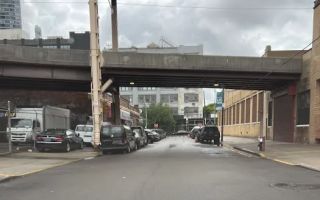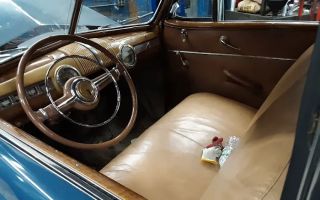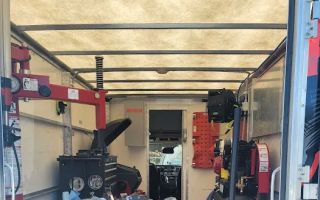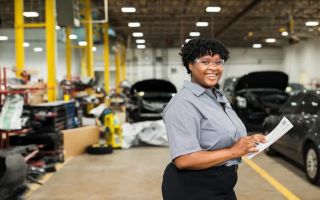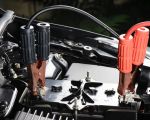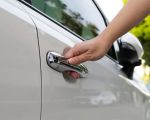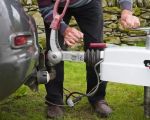- 1- What to Do in the Moment of the Accident
- 2- Ensuring Safety and Seeking Medical Attention
- 3- Documenting the Accident
- 4- Dealing with the Police and Insurance
- 5- Following Up After the Accident
- 6- Tips for Preventing Bicycle Accidents
1- What to Do in the Moment of the Accident
When involved in a car accident while riding your bicycle, the initial moments can be overwhelming. The first priority should be ensuring your safety and assessing the situation. Here’s what to do immediately after the collision:
- Stay Calm: Try to stay as calm as possible to think clearly and act responsibly. Panicking may make the situation worse.
- Ensure Personal Safety: Check for injuries. If you're able to move, try to get yourself off the road to a safer area away from traffic. If you're severely injured, stay still and wait for help.
- Check on Others: If other people are involved in the accident, check on their well-being. If they appear injured, don’t attempt to move them unless they’re in immediate danger.
- Stay at the Scene: Never leave the scene of the accident. Leaving can result in legal consequences. Wait for the police and emergency responders to arrive.
2- Ensuring Safety and Seeking Medical Attention
After a bike and car collision, it's crucial to prioritize your health and safety. Even if you don’t feel pain immediately, injuries can be internal or masked by adrenaline.
- Call for Help: Dial emergency services immediately. Let them know that you have been involved in an accident, whether you feel injured or not. Medical professionals will assess you even if you think you’re fine.
- Seek Medical Attention: After the immediate danger has passed, always seek medical attention, even if your injuries seem minor. Injuries like concussions, whiplash, or soft tissue damage may not be obvious right away.
- Monitor for Symptoms: Watch for any delayed symptoms such as dizziness, confusion, or pain in your neck or back. If any of these occur, return to the hospital for further examination.
3- Documenting the Accident
Accurate documentation of the accident will be crucial for insurance claims, police reports, and potential legal actions. Here are steps you should follow to ensure proper documentation:
- Exchange Information: Get the names, addresses, phone numbers, and insurance details of the driver involved. Be sure to record the make, model, and license plate number of the car.
- Take Photos: If you’re able, take photos of the accident scene, including your bike, the vehicle involved, any damage, and the surrounding area. These images can serve as valuable evidence later.
- Write Down Your Account: As soon as possible, write down your own version of events. This will help you remember the details clearly and may help corroborate your story later if needed.
- Get Witness Statements: If there were any witnesses to the accident, get their contact information and ask for their account of the events.
4- Dealing with the Police and Insurance
Once the police arrive, you will need to file a report. Make sure to ask for a copy of the police report, which may be useful for insurance claims or legal actions.
- Cooperate with the Police: Provide all necessary information to the police, but avoid admitting fault at the scene. Just state the facts and let the police investigate.
- File an Insurance Claim: Notify your insurance company about the accident. If the car driver is at fault, their insurance may be liable, but your own insurance company may assist with medical expenses or repairs if needed.
- Consult a Lawyer: If you are facing significant injury or if liability is unclear, consult with a personal injury lawyer. They can help you understand your legal rights and ensure you receive fair compensation.
5- Following Up After the Accident
Once the initial shock of the accident wears off, there are several steps to take to follow up and ensure your recovery is on track:
- Follow Up with Medical Appointments: Keep all your medical appointments and follow any prescribed treatments. Documentation of your recovery will be important for insurance claims and legal cases.
- Repair or Replace Your Bicycle: Assess the damage to your bike and either repair it or replace it if needed. If your insurance covers the damage, work with them to handle repairs or reimbursement.
- Review Your Legal Options: If you are still unsure about liability or compensation, continue to discuss your case with a lawyer to ensure you are getting what you are entitled to.
6- Tips for Preventing Bicycle Accidents
Although accidents can happen unexpectedly, there are several steps you can take to minimize the risk of bike accidents in the future:
- Wear Proper Gear: Always wear a helmet and any other protective gear like reflective clothing. This can help prevent injuries in case of an accident.
- Be Visible: Make sure that both you and your bike are easily visible to drivers. Use bright colors, reflective gear, and bike lights, especially if you’re cycling at night or in low-light conditions.
- Follow Traffic Laws: Obey traffic signals, use hand signals to indicate turns, and ride in designated bike lanes where available. Being predictable to other road users can prevent accidents.
- Stay Alert: Pay attention to your surroundings, stay aware of other vehicles, pedestrians, and potential hazards on the road. Avoid distractions like using your phone while riding.
In conclusion, handling a car accident with a bicycle involves several critical steps to ensure your safety and protect your rights. By staying calm, documenting the accident thoroughly, seeking medical attention, and cooperating with insurance companies and the police, you can navigate the aftermath of a bike accident with confidence. Remember, prevention is key—by taking precautions while cycling, you can reduce the chances of accidents occurring in the future.
If you're involved in an accident and need reliable assistance, don’t hesitate to reach out to experts at Rescue & Towing for support.

